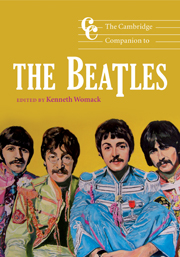Introducing the Beatles
Published online by Cambridge University Press: 28 September 2011
Summary
If the artist could explain in words what he has made, he would not have had to create it.
alfred stieglitzThis book is about the Beatles' musical art. It is about the songwriting and recording processes that brought it to fruition, while also studying their recording career as an evolving text that can be interpreted as a body of work. But how, then, do we trace the contours of the Beatles' art? If we understand a work of art to be both the expression or exploration of a creative impulse and the process of creating a material object – whether that object be a novel, a painting, a sculpture, or a song – then we also implicitly recognize the art work to be the result of an indelibly human drive to communicate a set of ideas, to draw upon a sustained sense of aesthetics or ethos in order to establish beauty, and to engage in acts of storytelling in order to generate an emotional reaction. These latter elements enable the art object to function as a symbolic vehicle of cultural expression. If we accept the notion of the Beatles as recording artists, how, then, do we define the principal aesthetic and literary-musicological elements that inform John, Paul, George, and Ringo's enduring “body of work”? In order to comprehend their art as the result of a creative synthesis, we must work from a set of principles that assists us in understanding the range of their artistic pursuits as they are made manifest in the recording studio.
- Type
- Chapter
- Information
- The Cambridge Companion to the Beatles , pp. 1 - 6Publisher: Cambridge University PressPrint publication year: 2009



